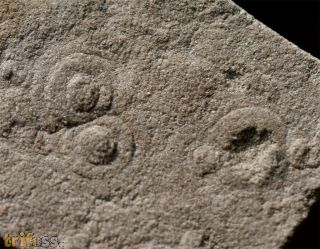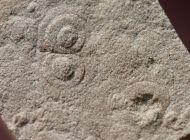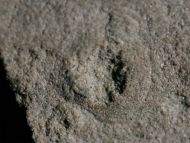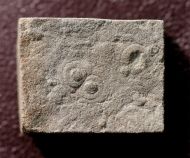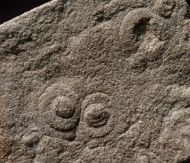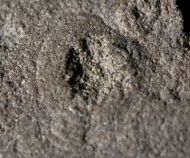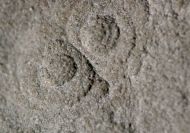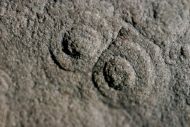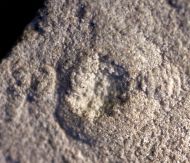Fossils for sale
Welcome back!
Sold:
Cyclomedusa delicata Fedonkin, 1981
Products description
| This Ediacrian piece shows double of Cyclomedusa delicata together with a 3rd specimen. Ediacara fossills of the genus Cyclomedusa are widely distributed. As the name suggest was Cyclomedusa interpreted in the past as a jellyfish. This specimen shows why this interpretation is today mostly considered as outdated. Specimens of Cyclomedusa that are close together interfere with each others grow as it is nicely shown at the double on this plate. What is a indication a benthic (on the ground) or even sessile (attached to the ground) live habit. Also the structures of Cyclomedusa are not comparebile with modern jellyfish anatomy. So today it is suggested that Cyclomedusa was some kind of microbial colony. Like on nearly all Ediacara biota fossils is this interpretation not undisputed. This plate shows a third specimen that is damaged at its center. There are some rudimentary radial segmented structures visible inside. This Cyclomedusa is only about 7 mm in diameter. The double Cyclomedusa measures about 10 x 6 mm. | |||
Location: | Solza River, Arkhangelsk region, Russia | ||
| Plate Size : | about 24 x 18 mm | ||
| Age: | Precambrian, Ediacarum, Yampol Member, Mogilev Formation, Balday Series (Ca. 570 Mill. Years) | ||
Product no.: 8392
